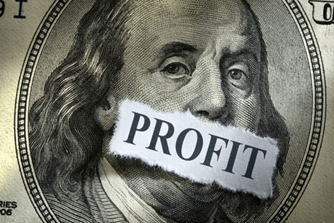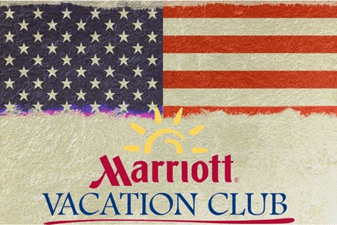The Irish writer George Bernard Shaw once said: ‘England and America are two countries divided by a common language’, the same may be said of timeshare in a roundabout way. Here we look at not just England but Europe. As we have often reported, timeshare sales in Europe are at the lowest point for decades, not so the USA. We recently spotted that the mighty Marriott Vacations Worldwide: “MVW”) Reported their Second Quarter 2022 Financial Results. Now these results cover the whole of the Marriott empire but what was of interest were the results for the timeshare division, Marriott Vacation Club.

The numbers look good but what about the reality?
According to the figures, and we quote:
“Consolidated Vacation Ownership contract sales were $506 million, a 40% increase compared to the second quarter of 2021, and VPG increased 7% to $4,613”.
The figures are sort of easy to explain, in basic terms Marriott sold $506 million timeshare, this would include new sales and upgrades, wow, some number, but looking a little closer, although a massive amount of Dollars, three letters tell a clearer story.
VPG increased 7% over the same quarter last year, so what is VPG? This acronym stands for Volume Per Guest. VPG is calculated by the total money; in this case $506m divided by the number of tours carried out at the various Marriott timeshare resorts. We should state for clarity that “tour” in timeshare parlance actually means sales presentation.
According to research carried out by Fidelity Real Estate, a timeshare resale broker in Orlando, Florida, they state the following:
If you are looking to purchase Marriott points directly from Marriott, then expect to see that the average cost starts at $22,000 for approximately 1,500 Vacation Club Points.
So from this it appears an entry level timeshare ownership with Marriott will cost $22,000. Working on this figure and applying the VPG of $4,613 this would mean that in the second quarter of this year 109,690 potential customers were toured, sorry sold to. Naturally some enjoyed the experience and purchased an entry level of $22,000, some no doubt paid even more, then to get to $506m, 23,000 would have purchased. As you can see the numbers don’t really tally. The sales team want to take $22,000 but on average only achieved $4,613 per tour, this confirms that the no’s outweighed the yes’s by a considerable margin.

Distorted figures
No one is denying that during the second quarter a significant number of Americans either upgraded or purchased timeshare for the first time with Marriott, naturally there will be a smattering of foreign buyers but the lion share will be from the USA. What is clear though is the size of the sausage machine and the amount of meat that goes in at the front end for not a lot of sausage at the other end.
$506m is certainly a large sum but this relates to the volume of sales not profit, this where the figures get distorted and don’t paint a true picture.

Cost v profit
We have in the past looked at cost and profit extensively and have come to the conclusion that from a developer point of view, timeshare is extremely profitable but there are very large sales related overheads. It’s not unusual for timeshare representatives to earn 15 to 20% commission, although we don’t know the exact figures for Marriott. The reps managers also get an “override” on each sale so even at a conservative 15% the rep wage bill could come to $75,900,000.
Apart from existing owners, new blood has to be attracted by all sorts of incentives and giveaways, theme park tickets to Disney or Universal Studios don’t come for free. Rack up the other associated marketing costs and getting to the bottom line is far from the gross $506m.
More results have been announced this week, this time from Hilton Grand Vacations. After all expenses the picture changes, Hilton Grand Vacations recently announced that its contract sales in the second quarter were $617 million. It produced a net income (a measure of profit) of $73 million on $948 million in revenue. From this it may be seen that after all expenses the net income represents 7.7% of the total. This really highlights the cost of acquisition.

Profit v profit
This is where the numbers start to stack up. Most timeshare developers including Marriott operate a points based system. The number of points that can be sold is infinite. In the old days of fixed weeks, one apartment may have been sold to a maximum of 50 people; nowadays the same apartment with points may be sold hundreds of times over. Why do you think that booking availability is such a problem?
According to Fidelity, the entry level will grant you over 2,000 different holiday options from Carnival Cruises, Marriott Vacation Club Pulse resorts, and more, however to get more you need to own more points.
There are varying levels of ownership that are dependent upon how many points you purchase. With 1,500 points you can travel to San Diego, enjoy a cruise to Catalina, head to San Francisco, and more. 2,000 points allow members to visit Marriott’s Ocean Pointe and resorts in Cabo. 4,000-6,999 points will take you to Marriott’s Desert Springs, Ireland, and Sunny Portugal Estoril Coast. 7,000-9,999 points offer members up to 7,000 different vacation options. The next two point tiers offer guests the chance to stay at a near 9,000 destinations worldwide.
So in the extreme of 9,999 points could cost $146,652. Points are an internal currency for Marriot and as such have little or no exterior value, except via exchange companies. At entry level each point costs nearly $15 but again when looking at the Fidelity site in some cases the same $15 points are selling at 1 Cent per point:

From this it might become clear that as points are essentially selling thin air, no manufacturing or material costs means the profit v profit is still handsome, even with associated marketing costs.

Look before you leap
This was a message we put forward in a previous article. We shudder to think how much the owner in the advert above paid over the years to own 154,000 points. Also how much has this owner paid over the years in annual maintenance fees? Now to put all these points on the market for 1 Cent a point demonstrates a chilling fact that timeshare has virtually a zero resale value. Now perhaps you realise why, despite what you were told at the sales presentation; “for sure you can sell your points back to us at any time” Or “for sure it’s an investment and will go up in value” was not only stretching the truth but actually was a downright lie. But that’s OK because it matters not what the rep said, because according to the developer “if it ain’t in the contract, it ain’t gonna happen”.
You really need to think twice, or even ten times before buying a timeshare or you simply become the owner of nothing more than a worthless dream and all you achieve is swelling the bottom line in the developers’ accounts. Luckily the tide may be turning, out of an estimated nearly 110,000 “tours” carried out by Marriott in the second quarter, the lion share saw through the product and didn’t buy. They were the lucky ones; the ones who purchased to the tune of $506m collectively now must learn the hard way that what they bought is not all its cracked up to be. We can only hope they didn’t hock themselves up to the neck with extremely high interest loans.
For more information regarding this article or assistance in any other timeshare related issues please contact the TCA on 01908 881058 or email: info@TimeshareConsumerAssociation.org.uk
